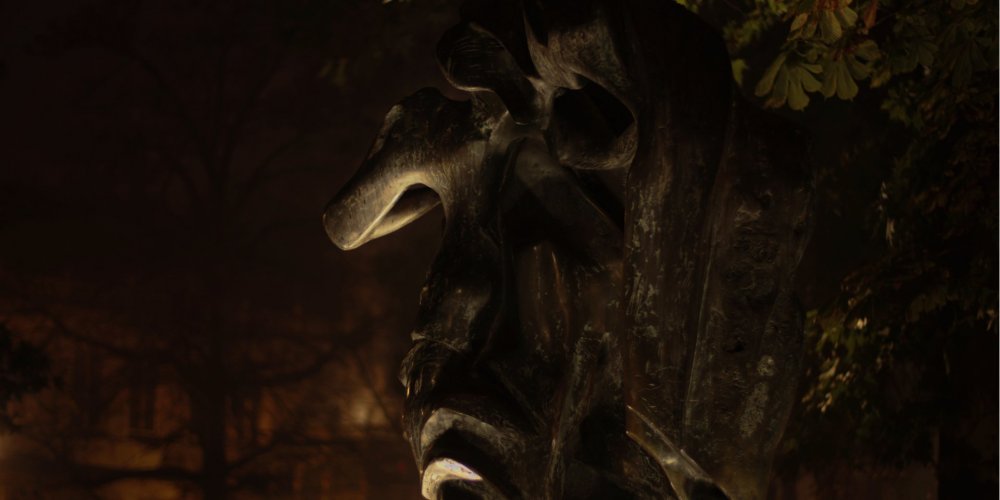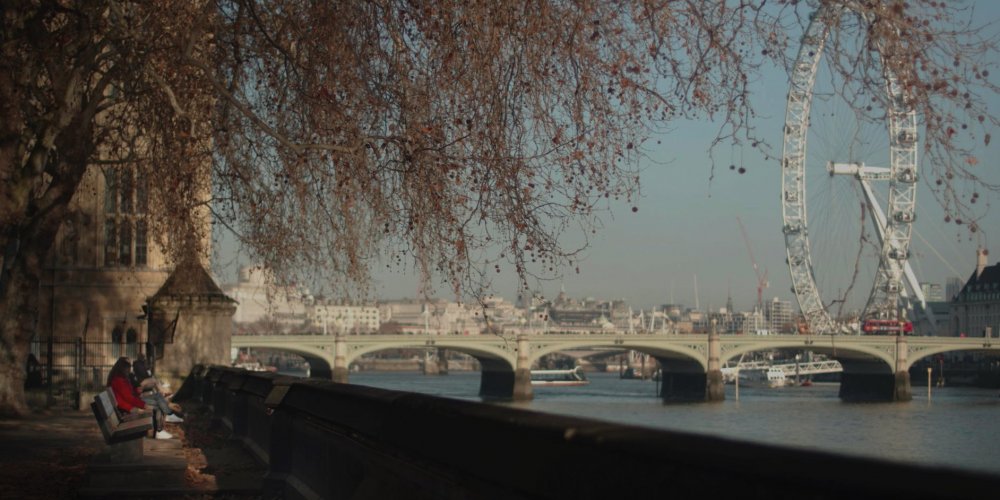-
Posts
6,092 -
Joined
-
Last visited
Content Type
Profiles
Forums
Articles
Everything posted by BTM_Pix
-
Considering how close you were to getting it last Thursday, I'd say you've resisted long enough !
-
Its a custom design. The ones in the video are resin printed but the shipping ones are industrial 3D prints in a polished carbon dyed nylon. The unit threshold for break even on injection moulding is too high for a niche product and it would have been a needless cost to pass on to people really. The PBC is the first piece of the jigsaw so expect other things to sprout from it in relatively short order. And not just for the Blackmagic cameras. As the PBC drives the camera's own lens control system, the extent of the compatibility with adapters is exactly the same as the camera allows with the adapter. So, if the adapter (such as Viltrox) can't drive the focus from the camera istelf then the PBC won't be able to either. The difference in the packages is the total value of the package as the First Wave includes the tripod adapter. So the user pays the same price but the discount % is more as it is from a higher total value. Expect to see more coverage of it over the next week or so from different outlets...
-
It acts as a bluetoorh bridge between the Tilta wheel and the camera but the Ronin wheel is S-BUS so would require a different reciever type. Its possible to do but would be a different product. The PBC is designed to act as a hub for add ons as well as a standalone product (it will be the core module of the AF expander for example) so an expander module to do S-BUS could be considered.
-
I'm not sure if it has 10 bit out though I suspect not or they would have been shouting it from the rooftops. The kit lens it had on (which has VR to somewhat mitigate the lack of IBIS) is a bit slow in terms of light gathering but the AF even in a shitty lit camera shop was anything but slow and it being collapsible makes the basic kit very compact. On the other hand, the current downward trajectory of the Z6 price (aided and abetted by the increasingly unicorn resembling ProResRAW option) will likely see used ones hitting the £1K mark in the next few months so it might well be worth hanging on if you're in no rush. The D500 is considered by Nikon Professional Services as a fully fledged pro camera and actually carries more qualifying profile points now than the D3s, so thats another win in the hair splitting wars for it
-
Thanks. Yes, a Panasonic one will happen reasonably soon.
-
Ignition on. If you'd like one, you can order it here https://www.indiegogo.com/projects/pbc-blackmagic-pocket-cinema-camera-controller/x/22750367#/
-
As I said, the RAW stuff is moot when shooting live editorial because the entire pipeline is jpeg. No one has the time to ingest RAW files over wifi to camera and then process them. For me, using these cameras side by side in real working conditions, the D3s produces better images out of the camera when shooting night matches where even in top tier stadiums you are struggling for light. Full frame has advantages at the other end of the range as not everything is shot with telephotos. A lot of shots need wides so having the 14-24mm actually being 14mm is important as well. Shooting stadium shots, wide vistas at the Tour de France and a whole raft of other GV stuff is pretty ugly with a crop sensor as you have to use 8mm lenses which get pretty curvy to say the least. The fps is faster in DX mode on the D3s hence I used that when comparing like for like with the D500. I don't think this is an either or situation anyway. As I said I have both and have used them both side by side in all manner of conditions and environments for the last 3 1/2 years so they both have their place. Incidentally, I had a small play with the the Nikon Z50 earlier tonight. I have to confess I haven't paid much attention to it and presumed it was the D500 sensor but myself and @Andrew Reid were pleasantly surprised see it doesn't have the same daft crop when we put it in 4K in the shop. That camera is going to be a decent bargain on the used market in six months time.
-
Well, I've got a D500 as well and use it for work alongside a D4, D4s and a D3s. It is the best APS-C sports camera around and if the conversation hadn't have been about full frame options then I'd have no issue recommending it. Having said that, between the two though there are still areas where the D3s is better for the specific job, notably lower noise at high ISO, slighter faster FPS and significantly longer battery life. The jpegs out of the camera (and its always about the jpegs rather than the RAW for live editorial) at the higher working ISOs are cleaner coming off my D3s than my D500. With regard to shutter count on used versions of both, its a bit of a swings and roundabouts job. The older D3s will likely have a higher shutter count but is also likely, like mine, not to be on its first one. Allied to the fact that the rated shutter life expectancy of the D3s is 300K versus 200K on the D500 then its likely that you might actually end up with a longer lifespan with a D3s. Certainly if you bought my D3s and D500 off me then you'd be feeling the pain of replacing the shutter on the latter first despite the difference in years and use between them!
-
Sounds like its definitely a thing then, although mine was an equal opportunities cock up as it wouldn't work on Mac either. Gnarbox 2 had been on the radar for a while but is now flashing the imminent collision warning! This one, amongst a few others, had been fine for me doing all that sort of interchange as well. When I was trouble shooting it, I did go down that route of trying to see if shutting down the iPad with it connected would cause a safe ejection and solve it but to no avail but I'd definitely advise people doing that in the absence of Apple providing a specific eject function.
-
For the job we are talking about, thats a pretty big issue though But apart from that, off the top of my head.... Marginally faster fps, four times the buffer size, five times the battery capacity, no battery drain just to have the camera on and available, better weather sealing, top plate display, illuminated buttons, on board ftp over ethernet and wireless, access to a much broader and cheaper selection of long primes (particularly used), flash sync port, support services at events.... For day to day stuff those might not be significant but for the specific task of shooting sport stills on a professional basis - which is the perspective that I was making the suggestion from - then they are vital differences. The reasons that the X-T2 couldn't cut it for doing the job to the same standard as the D4 were not really to do with the image quality (save the waxy skin at high ISO) and those same reasons would apply to the A7iii and, for what its worth, to the Z6.
-
Twas the night before launch and a world's first for any app or device was stirring..... Really pleased to reveal that the PBC is fully compatible with both the Pocket4K and the Pocket6K. And yes, that also includes focus control.
-
I'm almost certainly the wrong person to ask because neither of the mirrorless cameras in that comparison or anywhere else in the thread will reliably turn in the same level of performance that I'd personally need for actual work that a D4 would provide so they wouldn't be under consideration. It would just be the X-T2 fiasco all over again. Whether you can squeeze enough out of one camera to do both tasks is debatable when one of those tasks is as specific as sports photograhy. Its a bit like a farmer having a 4x4 truck to get around his land and take the produce to market etc. Conceivably he could rig something up to it so he could plough the fields with it as well but the reality is he's going to need a tractor to do the job properly.
-
The problem with the A9 for is that the mechanical shutter is capped to 5fps which means that you have to use the electronic shutter and run the very real risk of banding from LED boards in most pro sports arenas and stadiums. That was one of the factors that seriously hindered the A9 being accepted by its target audience although I did a couple of Champions League matches last week and saw the first two I've ever seen being used pitchside. Whether that was due to Sony's sponsorship arrangements with UEFA meaning they were being trialled or whether the tide has turned for them remains to be seen.
-
My perspective as a professional sports photographer is if you are going to be shooting stills in that environment a lot then you should have a dedicated camera that is made for the job so I'd be looking at a used Nikon D4 and Nikkor 70-200mm f2.8 which you should be able to pick up for around £1500-1600. If you want to cut the budget a bit then substitue in a D3s instead of the D4 or up it to a D4s if you have a bit more budget. I trialled shooting with the X-T2 system as an alternative/supplement to Nikon about 3 years ago and whilst it made decent images it just wasn't up to the job at the same level and the experiment didn't last long. For video, you don't need a particularly low light monster as you won't need the same shutter speed so your 1000th/f2.8/ISO6400 even if you want to shoot 50p and have 180 degree shutter is only ISO640. Incidentally, the reported exposure from the X-T2 exposure will be innacurate as shooting one alongside a D4 in fixed lit stadiums, the X-T2 would be at ISO6400 and the D4 would be at ISO5000. The Nikon Z6 would be the obvious choice for the video to keep in the same brand as the tests I've seen with the FTZ adapter and the 70-200mm f2.8 show it performing well. Again, if you go for used then you should be able to pick up both cameras and the lens for around £3K. For that you will be getting a genuine professional sports stills camera that will take the shooting conditions you describe in its stride, a very capable 4K video camera with IBIS and a ProResRAW option (any year now) and a fast, stabilised high quality optic.
-
The screen colour scheme is user defined so there is an orange option you can set as well as cyan, blue and black. BM have not included the stills option in their protocol unfortunately.
-
Its had a shorter working life than a tube of toothpaste then if thats the case. Yeah, Its far more likely to be software related in that the unmount from the Android device fixed it but without iOS having an unmount function that brings me no nearer a solution to knowing whether its the underlying OS, the new fangled File app in ipadOS or the integration with LumaFusion. The whole situation with external file handling with the new iPadOS is very flaky and probably explains why they were so very reluctant to introduce it for so long.
-
Cheers I have to confess I didn't really check what it was called. "Somewhere in Brugge by that place with the nice stew" is about as precise a note that I have for it. They are all part of the focus pull demo collection for my controller so will have been fairly wide. The statue one was definitely wide open and the London one would probably have been around f4. I'd love to pretend that it was some studiously considered technique but its mainly just random messing about with settings so any similarity to anything decent is purely coincidental!
-
A couple of grabs from some things I was doing last week with the Canon EF 50 mm-f/1.4 USM c/w Metabones 0.71x on the Pocket4K.
-
Plot twist.... Tried it on yet another OTG cable on an Android phone and got it to mount, view and play files. Used the unmount option, unplugged it, plugged it into the Mac and now it is fine. So I now know the solution if not the cause.
-
Yeah what I meant was that I'll look into a bit further when this time crunch has gone away as its not about this single drive (not now I've got the data off that I needed anyway ) but about the T5s in general as I used quite a few of them so I want to get to the bottom of it to see what's caused it. I think this is God's way of telling me to buy a Gnarbox if I want to edit on the iPad.
-
Its now launch eve eve and our second to last window reveals a reminder that although the PBC can do a lot of tricks - and is the hub to which other tricks will connect to in the future - it can still be used as just a wireless remote Record Start/Stop switch on a rig if that is all you currently or will ever need.
-
To be fair, the Apple products are all working fine and its the Samsung one thats fucked. Oh, tell a lie, its done its best to take the WD Wireless Pro drive with it now. Although that thing is so flaky that trying to work out exactly whats caused it to not be currently working is like trying to establish which particular baked bean in the tin made you fart.
-
There is a First Wave package that adds up to a 33% discount.
-
Thanks for all the input. I'm tempted to just say "oh well its fucked" and throw it away after I've got everything off it but its spooking me a bit about whats happened. These T5 drives are becoming ubiquitous for me because of the Blackmagic cameras and editing on LumaFusion as well as just as general work portability so I have quite a few of them so I'd like to get to the bottom of what's caused it. Oh well, I'll have some free time at some point in 2024 so it will have to wait until then.
-
No, there is no need to in terms of data recovery now as the drive is visible to the WD Wireless Pro on its USB expansion port so I'm able to copy the files to that. I'll ponder why it won't mount on anything else when I'm through with actually using the files it was holding hostage






